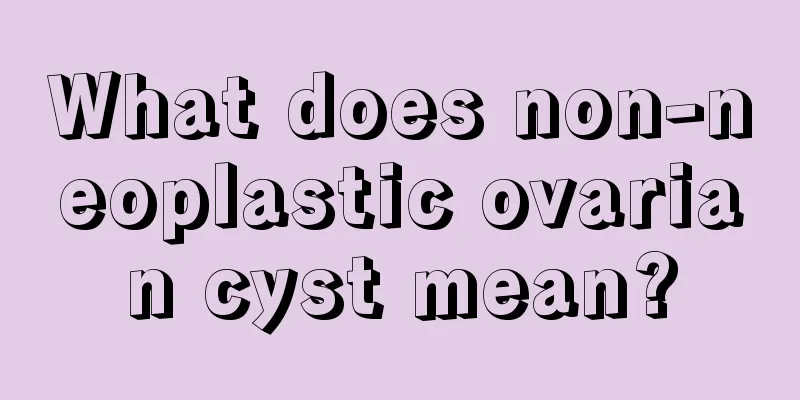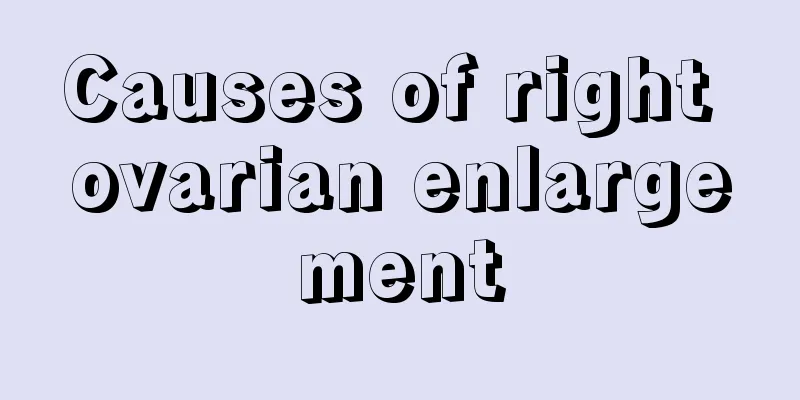What does non-neoplastic ovarian cyst mean?

|
Non-neoplastic ovarian cysts are also known as non-neoplastic ovarian cysts. Most of them are functional ovarian cysts, including follicular cysts, corpus luteum cysts, lutein cysts, inflammatory ovarian cysts, polycystic ovaries and uterine ectopic cysts (i.e. uterine and ovarian chocolate cysts). For example, follicular cysts, corpus luteum cysts, sphingomyelinating cysts, polycystic ovaries, etc. The first three types of storage cysts are multifunctional. 1. Follicular cysts are caused by the failure of mature follicles to remain or to lock, resulting in retention of egg fluid and formation of follicular cysts. 2. Corpus luteum cyst Corpus luteum cyst is relatively common and can be seen during the menstrual cycle and pregnancy. It is a cyst caused by the enlargement of the corpus luteum of the ovary, and its diameter can reach 3cm. 3. Sphingomyelinating cyst is a special type of cyst caused by moist leaf disease. It is a cyst caused by the stimulation of a large amount of gonadotropin in the body, which causes the ovary to produce sphingomyelinating reaction. 4. Polycystic ovary: The ovaries on both sides are enlarged, containing multiple small cysts, often combined with endocrine dysfunction such as ovulation, including polycystic ovary syndrome, which is often accompanied by oligomenorrhea or amenorrhea, infertility, excessive hair growth, obesity, etc. 5. Ovarian corona cyst is a tumor-like structure and also belongs to the category of non-neoplastic cysts. 6. Uterine and ovarian abscess is common and is a type of uterine and ovarian disease. Ovarian cysts are a type of uterine and ovarian tumor, which may be benign or malignant. Therefore, after discovering an ovarian cyst, the first thing to do is to diagnose whether it is benign or malignant. In addition, it should be noted that sometimes the uterus and ovaries appear cyst-like changes, but they are not cysts, such as polycystic ovaries, corpus luteum cysts, and endometriosis in the uterus and ovaries. Frequently Asked Questions: The diet should be light in taste, contain sufficient nutrients, correct picky eating and abnormal eating structure, and do not eat spicy food, seafood, etc.; alcohol, tobacco, onions, garlic, chili peppers and other spicy foods are prohibited. In addition, greasy, fried, moldy and other foods are not allowed. Beef, mutton, amaranth and other hot and blood-moving foods should not be consumed; during menstruation, any intense sports competitions and heavy physical work are strictly prohibited. |
<<: How long does it take to have a painful abortion?
>>: What is ovarian crown cyst?
Recommend
Is it good to eat durian during menstruation?
Dysmenorrhea troubles many female friends, so onc...
Causes and treatments of yellow-green vaginal discharge and vaginal itching
Many married women suffer from gynecological infl...
Why do nipples hurt after taking a shower?
We all know that women experience nipple pain dur...
What should you pay attention to when buying New Year's goods for your boss? When is the best time to send New Year's goods to your boss?
During festivals, giving gifts to leaders has bec...
Obesity is not caused by eating too much? Losing weight comes down to these 3 ways
After trying to lose weight many times, many peop...
How to completely treat fungal vaginitis and its methods
How to thoroughly treat candidal vaginitis is an ...
Pregnant women check low urea
In order to ensure the healthy development of the...
Do color Doppler ultrasound for delayed menstruation
If a woman's menstruation is delayed during t...
Will losing my uterus affect my sex life?
Some women may choose to remove their uterus due ...
What should you do if your child has strabismus? What ophthalmologists say!
《Cotton Swab Medical Science Popularization》 Beij...
What to do if pregnant women have a fever
Pregnancy is a very hard thing. When you are preg...
How many times should I usually pass the milk?
More and more women are aware of the benefits of ...
The secret to quitting smoking successfully: a comprehensive transformation from psychological to physiological
Author: Zhi Xiuyi, Chief Physician of Beijing Tsi...
Can I exercise during my menstrual period?
As the saying goes, "Food, clothing, housing...
What are the treatments for pregnancy complicated with hyperthyroidism?
The thyroid gland is a relatively important endoc...









